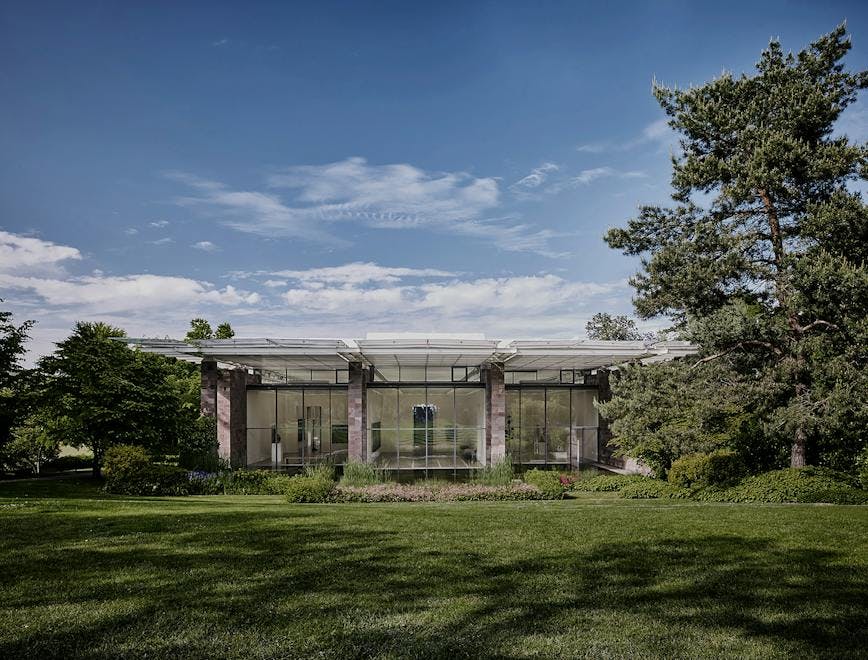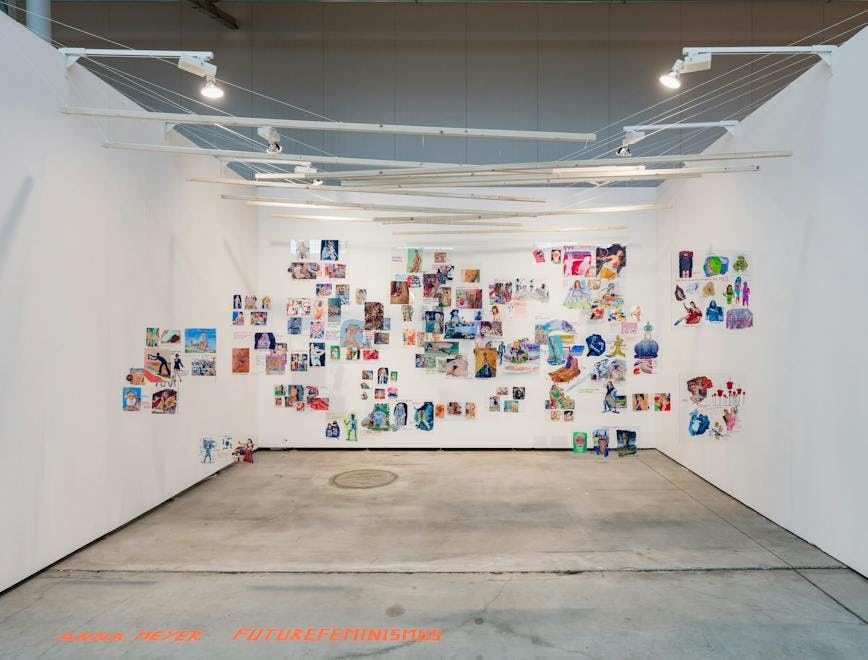Maja Vukoje: Balancing On The Edge
Maja Vukoje considers herself lucky to have come to the world of art “without any detours”: starting with a special secondary school education at an art and design school in Belgrade, to her studies at the University of Applied Arts, Vienna under established painters Maria Lassnig and Christian Ludwig Attersee, after which she “seamlessly entered the art business”. Even today, she is still fascinated by painting as an art form, not least because of the low “amount of effort involved in its creation, which allows the artist a great deal of autonomy”.
Transporting messages
Maja Vukoye’s work is characterized by a certain kind of “cultural hybridity”. Her paintings are never limited to a single image or statement but are linked to socio-critical, political, or historical elements. As political as her work usually is, she often turns to seemingly simple representations - a single coffee bean, a peeled orange, a sugar cube - which are in stark contrast to the complexity of their meaning. In doing so, she utilizes materials that can be considered atypical, such as jute transport bags, which she turns into the canvas: “This makes the surfaces of the pieces look like textile works, while they are indeed paintings”. Here, too, one recognizes the recurring motif of hybridity, as well as the contrast in which the transported goods are suddenly no longer located within the jute bag, but rather displayed on its surface.
An uncanny everyday life
Goods that originate from “colonial trade and exploitation relations”, such as sugar, coffee, and cocoa, are presented to the viewer without any background or other visual context. As innocent as these objects initially appear, they nevertheless, or maybe exactly because of their innocence, direct how the audience perceives the works: “The production and distribution of these crops are directly related to the development of global capitalism”. For Vukoje, plenty of uncanniness can be found in our everyday life.
Spatial arrangement
At Vukoje’s exhibition “On the Edge” at Belvedere 21, one cannot only experience the uncanniness of everyday objects but also discover an installation that Vukoje designed specifically for space. It is no coincidence that the exhibition space of the “21er Haus” is particularly suitable for extensive spatial concepts: The premises were created as the Austrian contribution to the 1958 World Exposition in Brussels when architect Karl Schwanzer designed a pavilion that consisted of a steel structure and could be converted thanks to a modular system. After some adjustments, it was transformed into the Museum of the 20th Century a few years later, before eventually being integrated into the prestigious Belvedere Museum. Belvedere 21 in its current form was finally opened in 2011.
Subjective Objects
Maja Vukoje draws her inspiration from the most diverse sources, whether feature films or ethnographic and psychoanalytical texts; it is the hypothetical” interrelation that could be present in an artistic, visual, and cultural work that ultimately fascinates her. For her, subjective experience plays an important role in the creation of her works, as it does subsequently for the spectator: “Art is always communication, a vessel into which a variety of things flow - knowledge, sensation, and affinities, some of which are subjectively colored. Thus a wealth of perceptions is created”.
Jolly good
Paintings, drawings, and room installations: Different approaches nevertheless effortlessly come together in a coherent and dialogical relationship in this exhibition. Even though elaborate concepts and complex themes underlie Maja Vukoye’s works, their accessibility and wit nevertheless provoke humor. Whether it’s an oversized “Jolly” ice cream, which at first glance reminds us of our childhood, or her “Fomogotchi”, which seems to self-ironically question the extent to which we ourselves tend to feed our fear of missing out a little too often. “On the Edge” vividly demonstrates what lies behind Maja Vukoje’s “cultural hybridity”: the exhibition encourages observation, contemplation, and reflection - on the personal, social, and cultural aspects of our lives.
Photos: Michael Wörgötter, Katharina Zwettler, Roland Krauss









